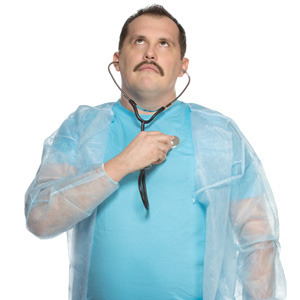
29 Jul This is Serious Stuff
 The other day my accountant came by to “do the books” and left a sheath of papers on my desk held together by a big metallic clip at the top. “Here are the results of my internet search for ‘clean air’ articles. You should look them over.” Naturally, since my CPA is a pretty smart guy, I did as I was told. I noted that they were brief summarized articles that were gathered together by a group called NACAA (National Association of Clean Air Agencies). It was accessed on June 26, 2015 at http://www.4cleanair.org/news.
The other day my accountant came by to “do the books” and left a sheath of papers on my desk held together by a big metallic clip at the top. “Here are the results of my internet search for ‘clean air’ articles. You should look them over.” Naturally, since my CPA is a pretty smart guy, I did as I was told. I noted that they were brief summarized articles that were gathered together by a group called NACAA (National Association of Clean Air Agencies). It was accessed on June 26, 2015 at http://www.4cleanair.org/news.
Who knew?
It didn’t take me long to spot an article entitled, “Study Links PM 2.5 Exposure Below NAAQS to High Death Rates” dated June 3, 2015. “Researchers from the Harvard T. H. Chan School of Public Health report that both short- and long-term exposure to fine particulate matter (PM 2.5) is significantly associated with higher death rates among people over 65…The study concluded that for short-term (two-day) exposure, there is a 2.14% increase in mortality for every 10 ug./m3 increase in PM 2.5 concentrations and for long-term (annual) exposure there is a 7.52% increase in mortality for every 10 ug/m3 increase. This association held true even where PM 2.5 concentrations were less than one-third the current NAAQS (National Ambient Air Quality Standards).” Ref. Laden F, Neas LM, Dockery DW, Schwartz J. Association of Fine Particulate Matter From Different Sources With Daily Mortality in Six U.S. Cities. Environm.Hlth Perspect. 2000: 108(10); 941-947.
What this study means to me is that:
- Inhalation of ambient air particulates of 2.5 um size or less, which actually consist mostly of nanoparticles (also called “ultrafine particles”) takes time for its related diseases to become manifest. Although PM 2.5 primarily cause respiratory and cardiac diseases, nanoparticles only add to this list of ailments (Blog # 7).
- Long-term exposure predisposes to premature death.
A second article indicated that this cascade of ill health can be interrupted when available protective technologies are used consistently for community-based efforts. Entitled, “Improved Air Quality Linked to Improved Children’s Health,” dated March 5, 2015 and published in The New England Journal of Medicine, related that “…researchers from the University of Southern California concluded that improved air quality is associated with statistically and clinically significant improvements in childhood lung function.”
The direct relationship between concentrations of airborne particles and respiratory mortality is documented in “Analyzing the health effects of simultaneous exposure to physical and chemical properties of airborne particles” by Pirani M, Best N, Blangiardo M, et. al. in Environ. Int. 2015; June, 79; 56-64. They reported that a consistent reduction in annual airborne particles resulted in an average annual decrease in respiratory mortality of 3.5%.
The additional effects of inhalation of PM 2.5 were detailed in a study by Woodruff TJ, Parker JD and Schoendorf RC in “Fine Particulate Matter (PM 2.5) Air Pollution and Selected Causes of Postnatal Infant Mortality in California” published in Environ. Hlth. Perspect. 2006: 114(5); 786-790. Their study reported a higher incidence of SIDS and postnatal deaths related to long-term exposure to PM 2.5.
Please note that the above articles all appear, as do hundreds of other articles about the effects of particulates on human health, in the environmental health journals while none appear in the surgical journals except for AORN J. which has shown consistent leadership in this battle to provide clean air in the country’s operating rooms. Thus, do not blame uneducated surgeons too much (a little is O.K.) for their reticence to use smoke evacuation technology; blame their journal’s editorial boards who have lacked the vision to publish data that supports efforts to prevent chronic inhalation of surgical plume by publishing articles about the topic, data that could have brought the surgeon’s attention to this topic.
Nonetheless, the “cat is out of the bag.” We know the above-mentioned relationships are true so as perioperative nurses, techs and physician advocates, do your best to educate your surgeons and work to protect both your health and that of your patients (Schultz LS. Can Efficient Smoke Evacuation Limit Aerosolization of Bacteria? AORN J. 2015; 102(1); 7-14).
DO IT!
